 Image search results - "hino" Image search results - "hino" |

Very little remains of Otowa castle originally built by Lord Gamou Sadahide. Two battles took place here in 1496 and 1503. Road to Otowa Castle on the hill seen on the left.
|
|

Hino was home to many Omi merchants who plied up and down Japan during the Edo Period to sell and trade their wares. They became quite successful selling medicines, lacquerware, sake, etc. Those from Hino were called Hino shonin (Hino merchants).
|
|

Hino's most prominent shrine is best known for the Hino Matsuri festival on May 2-3. The shrine was originally atop Mt. Watamuki, Hino's tallest mountain. It was moved to its present location in 796.
|
|
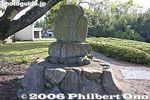
Nakano Castle, also known as Hino Castle, built in 1534 by Lord Gamou Sadahide (1508-1579). In 1582, when Oda Nobunaga was assassinated in Kyoto, Lord Gamo Katahide brought Nobunaga's wife and children from Azuchi Castle to Hino Castle for their safe
|
|

Held for two evenings on Aug. 14-15 during the obon season, people light their torches at Gosha Shrine and proceed to Hibarino park where the torches are thrown up to a large pine tree. The more torches get stuck on the tree, the better the next harvest.This is Hibarino park. The pine tree on the right of the small hill is the target for the torches. This park also serves as the Otabisho during the Hino Festival.
|
|

Barrels of Hino merchant sake
|
|
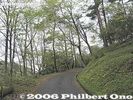
The castle is somewhat out of the way. It's a 15-min. walk from the nearest bus stop.
|
|

Later the shrine became Lord Gamou's family shrine and it was revered by Hino merchants during the Edo Period. This is the Shrine grounds. Map
|
|

The castle was abandoned in 1597. Only a few stone walls and shrines remain adjacent to Hinokawa Dam. This is one entrance to Nakano Castle. Map
|
|

Entrance to Gosha Shrine. 五社神社
|
|

The shrine also holds the Hino Matsuri on May 2-3.
|
|
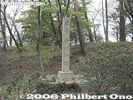
The castle met its demise in 1522 less than 60 years after it was built, after a war within the Gamou Clan. It now serves as a large hilltop park with good views of the surroundings. Otowa Castle marker
|
|
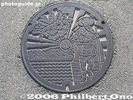
Manhole with the symbol of Hino merchant, Shiga Prefecture
|
|

Torii at Umamioka Watamuki Shrine in Hino, Shiga Pref.
|
|

Path to Nakano Castle ruins
|
|

Gosha Shrine torii
|
|

Suzuka Quasi-National Park markerThe area is within this park.
|
|

Omi Hino Merchant House. The former home of Hino merchant Yamanaka Hyouemon was donated to the town in 1981. Now a museum exhibiting the history and artifacts of the Hino merchants. 近江日野商人館Small admission charged. Open 9 am to 4 pm, closed on Mon. and Fri. Close to the center of town.
Address: Okubo 1011, Hino-cho
Phone No.: 0748-52-0007
山中兵右衛門
|
|

Stone bridge
|
|
|
|
|

Entrance to castle grounds, now a picnic and playground.
|
|
|

Stone bridge
|
|

Nakano (Hino Castle) in Hino, Shiga Pref. The castle was built in 1534 by Lord Gamou Sadahide (1508-1579).
|
|
|

Castle monument
|
|

Inside Omi Hino Merchant House近江日野商人館
|
|
|
|
|

Pile of straw to be lit. The fire is used to light all the torches.
|
|

Hilltop left
|
|

Lacquerware sold by Hino merchants近江日野商人館
|
|

Mikoshi portable shrine
|
|

In 1582, when Oda Nobunaga was assassinated in Kyoto, Lord Gamo Katahide brought Nobunaga's wife and children from Azuchi Castle to Hino Castle for their safety. The castle was abandoned in 1597.
|
|

White and red torii
|
|

Otowa Castle's hilltop center, now a playground.In Hino, Shiga Pref.
|
|

Inside Omi Hino Merchant House
|
|

Rear view
|
|
|

Torches
|
|

Hilltop right
|
|

Inside Omi Hino Merchant House
|
|
|
|
|

After it gets dark, the pile of straw is lit and people come to light their torches.
|
|
|

Inside Omi Hino Merchant House
|
|
|
|

Torii and steps to Inari Shrine
|
|

Takahata Fudo Station, Keio Line 高幡不動駅
|
|

People coming to Takahata Fudoson temple on Feb. 3, Setsubun day.
|
|

Way to Mogusaen Garden
|
|

Bus going to Hinohara from Musashi-Itsukaichi Station. Takes 30 min.
|
|

Area around entrance to Hossawa Falls
|
|

Bus stop for Kichijoji Falls near central Hinohara.
|
|
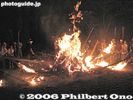
Lighting torches.
|
|

Trench or moat
|
|

Inside Omi Hino Merchant House
|
|
|
|
|

Sando path to temple from train station. 参道
|
|

Takahata Fudoson temple entrance 高幡不動尊
|
|

Decorating the path to Mogusaen Garden
|
|

Entrance to Hossawa Falls (free admission)
|
|

To Kichijoji Falls
|
|

Welcome to Hinohara village.
|
|

The torch procession goes from Gosha Shrine to Hibarino park.
|
|

Well used by the castle
|
|
|
|

Steps to Inari Shrine
|
|

Entrance to Takahata Fudoson Kongoji temple
|
|

The setsubun bean-throwing starts with a memorial service, then a procession of the bean throwers and priests.
|
|

Long uphill slope will keep you panting until the garden entrance.
|
|

Signboard showing Hinohara's waterfalls
|
|

Explanation sign
|
|

Hinohara Village Office. For a small village, this is a grand building. 檜原村役場
|
|
|
|

Clothing worn by Hino merchants
|
|

Garden
|
|

Inari Shrine torii
|
|

Takahata Fudoson Kongoji temple, Hino, Tokyo 高幡不動尊金剛寺
|
|

Priests in setsubun procession within the temple grounds.
|
|

Entrance to Mogusaen Garden
|
|

Trail to Hossawa Falls
|
|

Down to Kichijoji Falls, right next to the highway.
|
|

Drawing of Hinohara Castle
|
|

During the procession, children use sticks to hit the torch flame. They had great fun.
|
|

Nice view of adjacent reservoir 日渓溜
|
|

Travel passport required to travel around Japan
|
|

Senryo Matsu pine tree千両松
|
|
|

Niomon Gate, Important Cultural Property from the Muromachi Period 仁王門 (重要文化財)
|
|

Priests in setsubun procession within the temple grounds.
|
|

Steps to garden
|
|

Trail to Hossawa Falls
|
|

Gorge
|
|

Inside Hinohara Village Office
|
|
|
|

Flowers in bloom in early May
|
|

Sake containers
|
|

Painted (and fading) wooden tablets
|
|

Inari Shrine 稲荷神社
|
|

Niomon Gate
|
|

Priests in setsubun procession coming through Niomon Gate
|
|
|

Trail to Hossawa Falls is very lush
|
|

Downstream of falls
|
|

Hinohara Village Office has a coffee shop.
|
|
|

Adjacent reservoir
|
|

Medicine
|
|

Painted (and fading) wooden tablet
|
|
|

Fudo Hall on left and Horinkaku on the right, Takahata Fudoson Kongoji temple, Hino, Tokyo
|
|

Priest blowing a conch shell
|
|

Beware of falling rocks
|
|

Akikawa River below Kichijoji Falls, Hinohara, Tokyo
|
|

Made in Hinohara, displayed in the coffee shop.
|
|

Hino Hifuri Festival, Shiga.
|
|

Hinokawa River 日野川
|
|
|
|
|

Priests in setsubun procession coming through Niomon Gate
|
|

Incense burner 大香炉
|
|

Shoren'an which is now a restaurant. 松連庵
|
|

It's a short trail, but very nature-rich
|
|

Kichijoji Falls 吉祥寺滝
|
|

Jam made in Hinohara.
|
|
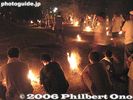
Hibarino park. Map
|
|

Rice paddies near the castle
|
|

Shakunage or rhododendron
|
|

Ryokyo Shrine 凉橋神社
|
|

Festival beauties included.
|
|

Putting smoke on one's head.
|
|

Plum tree and Shoren'an
|
|
|

Kichijoji Falls 吉祥寺滝
|
|

The Village Office and coffee shop has a great view of the river.
|
|
|

Toward the exit
|
|
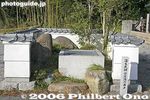
Well used by Lord Gamou
|
|

Temple priest
|
|

Fudo Hall from the 14th century, Important Cultural Property 不動堂 (重要文化財)
|
|

One of the few plum trees in bloom in early Feb.
|
|

Small river below, fed by the waterfall
|
|

Kichijoji Falls 吉祥寺滝
|
|

Hinohara village manhole
|
|
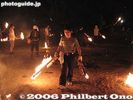
This man holds multiple torches.
|
|

Hinokawa Dam Park 日野川ダム公園The dam is right behind the castle ruins. These pictures were taken in early May when flowers were in bloom.
|
|

Names of the bean throwers.
|
|

Fudo Hall
|
|

Plum blossoms
|
|

Boundary between Ome city and Hinode-machi town. I was hiking from Mt. Mitake in neighboring Ome.
|
|

Monuments
|
|
|

Hinohara Village Tourist Info Office
|
|

Throwing a torch up the pine tree. Very few people succeeded in landing the torch on the tree (which doesn't burn down).
|
|
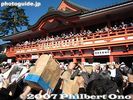
Start of setsubun bean throwing (mamemaki) by minor celebrities. 豆まき
|
|
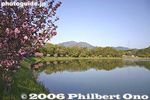
Hinokawa Dam Park and Mt. Watamuki. 日野川ダム公園綿向山
|
|

Fudo Hall offertory box and worshippers
|
|
|
|
|

This is not the waterfall.
|
|

Upstream Kichijoji Falls
|
|

Inside Hinohara Village Tourist Info Office
|
|

Hinokawa Dam Park 日野川ダム公園
|
|

Offertory box
|
|

Miss Nippon
|
|
|

Very close to the summit of Hinode-yama. Only one lodge is here.
|
|

Picnic pavilion near the waterfall.
|
|

Kichijoji Falls consist of three small waterfalls. Hinohara, Tokyo 吉祥寺滝
|
|

Main intersection in central Hinohara
|
|
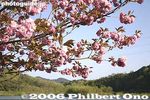
Hinokawa Dam Park 日野川ダム公園
|
|

Miss Nippon throw beans, but not very far.
|
|

Horinkaku and Niomon on right.
|
|

Centerpiece plum tree but too early for flowers. 寿昌梅
|
|

Last flight of steps to the summit.
|
|

Sign in English explaining the rules (take home your trash, don't dirty the water, etc.)
|
|
|

Kichijoji Falls, Hinohara, Tokyo
|
|

Horinkaku 宝輪閣(お札所)
|
|

Kimono beauties and beans do mix well.
|
|

Shoren'an and picnic tables
|
|
|

Finally, a sign of the waterfall.
|
|
|

Central Hinohara called Honshuku 本宿
|
|

Women in kimono is a must on Setsubun day.
|
|

Roof of Horinkaku 宝輪閣
|
|

View of the city
|
|

Top of Mt. Hinode-yama
|
|

There it is. Notice the smaller falls at the top.
|
|
|
|

Bus from Musashi-Itsukaichi Station.
|
|

Minor female idols also on hand to throw beans.
|
|

Statue of Hijikata Toshizo from Shinsengumi. 土方歳三像
|
|

View of the city
|
|

Top of Mt. Hinode-yama
|
|

Hossawa Falls, Hinohara, Tokyo
|
|

Upstream Akikawa River from the waterfalls
|
|

Akikawa River
|
|

節分会に吉井怜、三津谷葉子、福下恵美が豆まく
|
|

Statue of Hijikata Toshizo. 土方歳三像
|
|
|

Benches all over for us to gaze at the panorama.
|
|

Base of Hossawa Falls
|
|

Highway next to Kichijoji Falls
|
|

Akikawa River
|
|

Bikini idols Yoshii Rei, Mitsuya Yoko, and Fukushita Megumi throwing beans on Setsubun
|
|

Rear view of Hijikata Toshizo statue
|
|

Wakayama Bokusui Song Monument 若山牧水歌碑
|
|

Alpine map pointing the way to various areas
|
|

Hossawa Falls
|
|

Down to another scenic point near Kichijoji Falls
|
|

Banner at souvenir shop
|
|

Shinsengumi monument 新選組両雄の碑
|
|
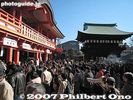
After the first bean-throwing session.
|
|

Benten Pond and Hall 弁天池・弁天堂
|
|

Basho haiku monument 芭蕉天神
|
|
|

Hossawa Falls
|
|

Gorge near Kichijoji Falls
|
|

Farewell to Hinohara
|
|
|

Bentendo Hall 弁天堂
|
|

Lookout point 清涼台
|
|

Mt. Hinode-yama summit has a little picnic pavilion
|
|

Ice crystals and running water. Normally, the Hossawa waterfall freezes over in winter.
|
|

Crystal-clear water
|
|
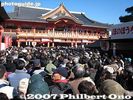
Crowd waits for another bean-throwing session
|
|

Five-story Pagoda 五重塔
|
|

Lookout point 清涼台
|
|

Benches for hikers who had lunch.
|
|

Ice crystals on rocks
|
|

Akikawa River
|
|
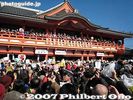
People crowd in front of the Horinkaku
|
|

Took 5 years to build this.
|
|

Lookout point
|
|

Spectacular views from the top of Mt. Hinode-yama, Tokyo. But I couldn't recognize any landmarks.
|
|

Hossawa Falls, Hinohara, Tokyo
|
|

To Nakayama Falls 中山の滝
|
|

Bean throwers make speeches.
|
|

Five-story Pagoda 五重塔
|
|

View from lookout point
|
|

Views from the top of Mt. Hinode-yama, Tokyo
|
|
|

Nakayama Falls as seen from the road. 中山の滝
|
|

Five-story Pagoda, architecture is based on early Heian Period-style. 五重塔
|
|
| 1413 files on 6 page(s) |
1 |
 |
 |
 |
|